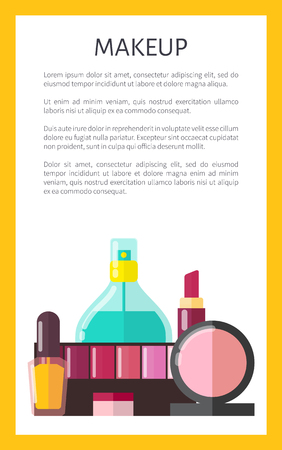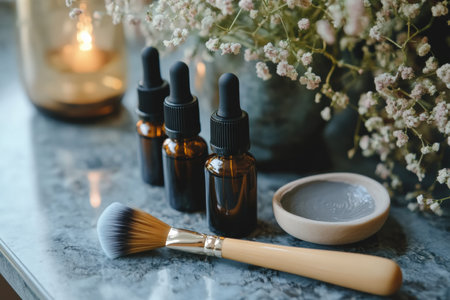Understanding Clean Beauty: What Does It Really Mean?
In the ever-growing U.S. beauty industry, the term “clean beauty” has become more than just a buzzword—it’s a movement reshaping how people approach skincare, especially those with sensitive skin. But what does “clean” actually mean on American shelves? Unlike terms like “organic” or “natural,” which are regulated to some extent, “clean beauty” doesn’t have an official definition from the FDA. Instead, it’s largely shaped by consumer demand and brand interpretation. In general, clean beauty in the U.S. refers to products made without certain controversial ingredients such as parabens, sulfates, phthalates, synthetic fragrances, and others that may be linked to irritation or health concerns. What sets clean beauty apart from conventional products is its focus on transparency, ingredient safety, and environmental responsibility. For those with sensitive skin, this means prioritizing formulas that avoid harsh chemicals and common allergens while still delivering effective results. As American consumers become more ingredient-savvy and health-conscious, brands are responding by clearly labeling products and offering detailed information about their sourcing and manufacturing practices. This evolution in the definition of clean beauty highlights a shift toward empowerment—giving you the information needed to make confident choices for your skin’s unique needs.
2. Sensitive Skin Needs: Knowing What to Look For
When it comes to clean beauty, understanding the unique needs of sensitive skin is crucial. Sensitive skin often reacts to certain ingredients that may be harmless for others, so knowing what to look for—and what to avoid—can make all the difference. The best approach is to opt for products with gentle, non-irritating formulas and minimal ingredient lists. Below is a helpful guide on which ingredients to seek out and which ones are best left behind.
Key Ingredients for Sensitive Skin
| Beneficial Ingredients | Why They Help |
|---|---|
| Aloe Vera | Soothes irritation and hydrates without clogging pores |
| Colloidal Oatmeal | Calms redness and relieves itching |
| Squalane | Mimics skins natural oils; deeply moisturizing yet lightweight |
| Ceramides | Strengthen skin barrier and help retain moisture |
| Allantoin | Promotes healing and reduces inflammation |
Common Irritants to Avoid
| Irritant | Potential Reaction |
|---|---|
| Fragrances (synthetic or natural) | Can trigger allergic reactions or dermatitis |
| Sulfates (like SLS/SLES) | Strip natural oils, leading to dryness and irritation |
| Alcohol (denatured, SD alcohol) | May cause stinging or excessive drying |
| Essential Oils (certain types) | Might provoke redness or sensitivity flare-ups |
| Dyes/Colorants | Add unnecessary risk of allergic response |
Other Considerations for Sensitive Skin Shoppers
- Patch test new products before full use, especially when trying a brand for the first time.
- Look for labels like “hypoallergenic,” “fragrance-free,” or “dermatologist-tested,” but always check the ingredient list for hidden irritants.
- Avoid long ingredient lists; simpler formulas typically mean fewer chances of a reaction.
Navigating Labels in the Clean Beauty Space
The abundance of buzzwords on product packaging can be overwhelming. For those with sensitive skin, focusing less on trends and more on proven gentle ingredients—and steering clear of common triggers—is your safest bet when exploring clean beauty options.

3. Decoding Beauty Labels: Natural, Organic, Non-Toxic, and More
Walking down the beauty aisles in any American store, you’ll notice products boasting labels like “natural,” “organic,” “non-toxic,” and “hypoallergenic.” While these terms sound reassuring—especially for those with sensitive skin—it’s important to understand what they actually mean before adding anything new to your routine. Many of these claims are not strictly regulated by the FDA, so brands may interpret them differently.
Natural
When a product is labeled as “natural,” it generally means that some or all of its ingredients are derived from plants or minerals rather than synthetics. However, there’s no legal standard for this term in the U.S., so a product might contain only a small percentage of natural ingredients while still using artificial preservatives or fragrances. For sensitive skin, “natural” doesn’t always guarantee gentleness—some plant extracts can be irritating, so always check the full ingredient list.
Organic
“Organic” typically refers to ingredients grown without synthetic pesticides or fertilizers. In the U.S., products labeled as “organic” must meet USDA standards if they carry an official seal. There are different levels of certification (“100% organic,” “organic,” and “made with organic ingredients”), so reading the fine print is key. For those with sensitive skin, certified organic products may reduce exposure to harsh chemicals but are not automatically hypoallergenic.
Non-Toxic
The label “non-toxic” suggests that a product does not contain ingredients thought to cause harm in normal use. But again, there’s no government regulation over this claim in cosmetics, and companies define it on their own terms. A non-toxic product may still include ingredients that could trigger reactions in sensitive individuals. It’s wise to research specific components if your skin is easily irritated.
Hypoallergenic
This claim implies that a product is less likely to cause allergic reactions. However, the FDA does not require manufacturers to prove this before using the term. For consumers with sensitive skin, it can be helpful but should not replace patch-testing a new product or consulting a dermatologist when possible.
Other Common Labels
You might also see labels like “fragrance-free” (which means no added perfumes, though some natural scents may remain) and “dermatologist-tested” (implying some level of professional input). These can be reassuring but don’t guarantee safety for every user.
What This Means for You
Navigating beauty labels can feel overwhelming, but understanding what each claim actually means—and doesn’t mean—can help you make more informed choices for your sensitive skin. Always read ingredient lists carefully and remember that even clean beauty requires a bit of detective work.
4. Red Flags and Green Lights: Claims That Matter
When shopping for clean beauty products designed for sensitive skin, it’s easy to get lost in a sea of marketing buzzwords. Some claims are strictly regulated and carry real weight, while others may be more about catching your eye than guaranteeing safety or efficacy. Understanding the difference is key to making smart choices for your skin health.
Understanding Regulated vs. Unregulated Claims
The U.S. Food and Drug Administration (FDA) and the Federal Trade Commission (FTC) oversee certain label claims in personal care products. However, not every term you see on a label is backed by strict guidelines. Here’s how to spot which claims matter:
| Claim | Regulation Status | What It Really Means |
|---|---|---|
| Hypoallergenic | Not Regulated | No official standard; companies can use this term without testing. May still cause reactions in sensitive skin. |
| Fragrance-Free | Somewhat Regulated | Should mean no fragrance ingredients are added, but sometimes masking fragrances are used. |
| Dermatologist-Tested | Not Regulated | No requirement for independent testing or specific protocols. |
| Non-Comedogenic | Not Regulated | No government definition; generally means unlikely to clog pores, but results may vary by individual. |
| Cruelty-Free/Not Tested on Animals | Not Regulated by FDA | No legal definition; look for certification from organizations like Leaping Bunny or PETA for credibility. |
| Organic/USDA Organic | Regulated (if USDA Certified) | If certified by USDA, must meet strict organic standards. “Organic” alone may be loosely used without certification. |
| Natural | Not Regulated | No legal definition—can be used freely by brands regardless of actual ingredient sourcing or processing. |
| Allergy-Tested/Safe for Sensitive Skin | Not Regulated | No standard criteria or oversight; effectiveness may vary widely between products and users. |
| Sulfate-Free/Paraben-Free/Phthalate-Free | Regulated if referring to ingredient content only | Means product does not contain listed chemicals; check ingredient list for verification. |
| BPA-Free Packaging | Regulated by FDA in some contexts (food contact) | BPA-free refers to packaging, not product formula; relevant if you’re concerned about chemical leaching from plastics. |
Navigating Marketing-Driven Language: Red Flags to Watch For
- “Chemical-Free”: This is misleading—everything is made of chemicals, including water. What matters is whether ingredients are safe and suitable for sensitive skin.
- “Toxin-Free”: No regulatory definition exists for “toxin” in beauty products. This claim is often used as a scare tactic rather than a meaningful safety guarantee.
- “Clinically Proven”: This should signal scientific evidence, but unless details of the clinical study are provided or referenced, it may be just marketing hype.
The Takeaway: Making Informed Decisions as a Consumer
If you have sensitive skin and want truly clean beauty options, always read the ingredient list rather than relying solely on front-of-package claims. Look for certifications from recognized third-party organizations when it comes to terms like “organic” or “cruelty-free.” When in doubt, consult your dermatologist—especially before trying new products. By knowing which claims are meaningful and which are mostly marketing, you’ll be empowered to pick safer, more effective skincare that respects both your sensitivity and your values.
5. How to Shop Smart: Tips for Navigating the Aisle
Shopping for clean beauty products when you have sensitive skin can feel overwhelming, especially with so many labels and claims on the shelves. To make your search easier and more effective, its essential to become a savvy label reader and know what certifications and ingredients matter most. Here’s how to shop smartly for products that truly suit your sensitive skin.
Read Ingredient Lists Carefully
Start by scanning the ingredient list instead of just trusting buzzwords like “natural” or “organic.” Look for short lists with recognizable ingredients—fewer additives often mean less chance of irritation. Avoid harsh chemicals such as sulfates, parabens, artificial fragrances, and alcohols, which are common triggers for sensitive skin. If you see names like “fragrance” or “parfum,” it’s best to steer clear unless the brand specifically states these are derived from natural sources and are allergen-free.
Understand Certifications
Certifications can help cut through marketing noise. In the U.S., look for seals from organizations like USDA Organic, EWG Verified™, or Leaping Bunny (for cruelty-free status). These logos indicate that a third party has reviewed the product’s ingredients and practices. However, remember that not every clean or sensitive-skin-friendly product will have a certification due to cost or application processes—so use certifications as one tool in your decision-making, not the sole factor.
Selecting Products Tailored for Sensitive Skin
Choose products labeled specifically for sensitive skin, but still check their actual ingredient lists. Hypoallergenic claims aren’t regulated by the FDA, so they don’t always guarantee safety. Patch test new products by applying a small amount to your inner arm before using them on your face or body. Look for formulas with soothing ingredients like aloe vera, chamomile, oat extract, or calendula, which are known to calm irritation.
Bonus Tip: Less Is More
If you’re new to clean beauty or switching routines, introduce one product at a time so you can pinpoint any reactions easily. Also, avoid over-layering multiple new products at once—it’s better for your skin and your wallet.
When in Doubt, Ask Questions
If you’re unsure about an ingredient or claim, don’t hesitate to reach out to brands directly or consult a dermatologist. Many reputable clean beauty companies offer transparent customer service and educational resources online.
6. Popular Clean Beauty Brands for Sensitive Skin in the U.S.
For anyone with sensitive skin, finding clean beauty products that deliver results without causing irritation can be a challenge. Fortunately, the American market has seen a surge in brands dedicated to formulating gentle, effective products free from common irritants and harsh chemicals. Below is a round-up of well-reviewed, widely accessible clean beauty brands that cater specifically to sensitive skin needs and have earned the trust of consumers across the U.S.
Tower 28 Beauty
Tower 28 is celebrated for its minimalist ingredient lists and dermatologist-tested formulations. All their products are designed with sensitive skin in mind—free from fragrance, essential oils, and common allergens. Their SOS Daily Rescue Facial Spray and SunnyDays Tinted Sunscreen are cult favorites among those seeking calming, skin-safe solutions.
Biossance
Biossance focuses on sustainable, science-backed skincare powered by squalane (a gentle, hydrating ingredient safe for sensitive skin). Their fragrance-free Squalane + Omega Repair Cream and Squalane + Probiotic Gel Moisturizer are top choices for users prone to redness or irritation.
First Aid Beauty
Widely available at major retailers like Sephora and Ulta, First Aid Beauty is known for its allergy-tested, non-comedogenic formulas. The Ultra Repair Cream has become a staple for those with eczema or easily irritated complexions. Their products are also free from artificial colorants, alcohol, and parabens.
Drunk Elephant
This buzzy brand stands out for its commitment to eliminating what they call the “Suspicious 6″—essential oils, drying alcohols, silicones, chemical sunscreens, fragrances/dyes, and SLS—from all products. Drunk Elephant’s Virgin Marula Luxury Facial Oil and Beste No. 9 Jelly Cleanser consistently receive high marks from users with sensitive skin.
Honest Beauty
Founded by Jessica Alba, Honest Beauty emphasizes transparency and safety. Their gentle cleansers, fragrance-free Hydrogel Cream, and flexible makeup options are formulated without over 2,500 potentially harmful ingredients commonly avoided by sensitive skin sufferers.
Paula’s Choice
Known for science-driven formulas that skip unnecessary irritants, Paula’s Choice offers several lines suitable for sensitive skin. The Calm line is especially popular among Americans seeking relief from redness and reactivity without sacrificing efficacy.
Shopping Tips
When shopping for clean beauty in the U.S., always look beyond marketing claims: check full ingredient lists and seek out third-party certifications where possible. These featured brands are widely available online or at national retailers—making it easier than ever for those with sensitive skin to find trustworthy clean beauty solutions tailored to their needs.
7. The Role of Dermatologists: When to Seek Professional Advice
Even with the growing popularity of clean beauty products and careful label reading, those with sensitive skin may still experience unexpected reactions. It’s important to recognize that while switching to cleaner formulations can be beneficial, it’s not a guaranteed solution for everyone. If you notice ongoing irritation, redness, breakouts, or other persistent skin issues—even after transitioning to clean beauty options—it’s time to consider consulting a board-certified dermatologist. Dermatologists are uniquely qualified to assess your skin’s needs, identify potential allergens, and recommend treatments tailored specifically for sensitive skin. They can also help determine if an underlying medical condition is contributing to your symptoms. Remember, no product label or online review can replace professional advice when it comes to your health. When in doubt, especially if over-the-counter solutions and ingredient swaps haven’t helped, don’t hesitate to schedule an appointment with a dermatologist who understands the complexities of both sensitive skin and the clean beauty landscape. Their expertise ensures you’re making choices that truly support your skin’s health and overall well-being.


